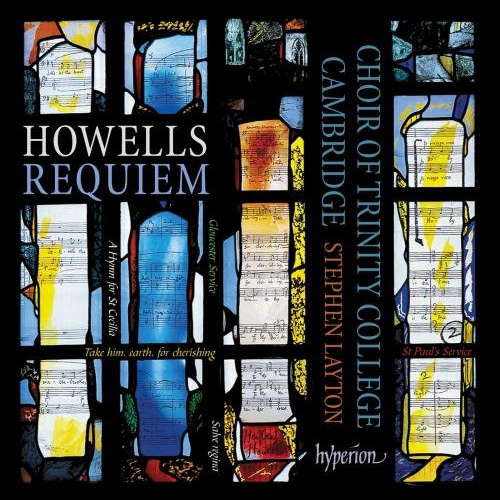- Grigori Zhislin
- Gerald Finley
- Salzburger Festspiele
- Pavilion Arts Centre
- Siegfried Idyll
- Caractacus
- Jeffrey Irving
- Katie Smith
 DISCUSSION: John Dante Prevedini leads a discussion about Composers, individuals or collective?, including contributions from David Arditti, Halida Dinova, Robert McCarney and Jane Stanley.
DISCUSSION: John Dante Prevedini leads a discussion about Composers, individuals or collective?, including contributions from David Arditti, Halida Dinova, Robert McCarney and Jane Stanley.
 SPONSORED: CD Spotlight. Beautifully Apt - Choral music by Herbert Howells, heard by Robert Anderson.
SPONSORED: CD Spotlight. Beautifully Apt - Choral music by Herbert Howells, heard by Robert Anderson.
All sponsored features >>
A Magnetic Presence
MIKE WHEELER listens to Bartók, Dohnányi and Dvořák from Domingo Hindoyan and the Royal Liverpool Philharmonic Orchestra with soloist Isata Kanneh-Mason
Domingo Hindoyan is now into his second season as Chief Conductor of the Royal Liverpool Philharmonic Orchestra, and already this is clearly a partnership that is going places – Royal Concert Hall, Nottingham, 16 November 2022.
They opened with the second and longer of the two suites Bartók drew from his ballet score The Wooden Prince. The fairy-tale plot features a Prince and Princess who live in castles separated by a wood and a stream, which are controlled by a Fairy. In the Prelude's quiet opening, conductor and orchestra immediately established a sense of anticipation, capped by Timothy Jackson's serenely atmospheric horn solo. 'The Princess' was characterised by engagingly playful woodwind, and 'The Forest' was properly spooky, reminding me of its equivalent in Britten's A Midsummernight's Dream. The Princess keeps ignoring the Prince, so he builds a puppet to attract her attention. 'The Prince's Work Song', was full of bounce and determination. 'The Stream', which the Fairy raises to a torrent to frustrate the Prince (she wants him for herself) moved seamlessly from limpidity to turbulence. 'The Wooden Prince's Dance' ends with the Princess in dispirited frustration as the puppet falls to pieces; The Postlude, after the Prince and Princess finally come together crowned by a touching reprise of the opening horn solo. topped off with celesta sprinkles. Here, as throughout, conductor and orchestra ensured Bartók's intsrumental colours came up gleaming.

Domingo Hindoyan. Photo © Grzesiek Mart
Isata Kanneh-Mason was the piano soloist in a performance of Dohnányi's Variations on a Nursery Song. It's high time this regained its former popularity, flipping as it does between the deliciously witty and the gloriously bonkers, leavened by a serious moment or two. (Dohnányi said he wanted it to amuse those with a sense of humour and annoy everyone else.) The Introduction's pretend tragedy was properly ominous and splendidly over-the-top, but you're allowed to be in this piece. The appearance of the song in question - no spoilers for anyone who hasn't heard the work - got the laughs as Isata toyed with it. Her technical command and playfulness were equally impressive, as she scampered up and down the keyboard in Variation 1, and chattered merrily to imitate a music-box in No 5. The orchestra, too, was clearly having fun, from Variation 2's mock-portentous horns and trumpets to the bumbling humour of the eighth Variation, topped off by a wonderfully goofy xylophone solo. The Passacaglia of No 9 was suitably weighty, throwing into relief the fizzing energy of the fugue in No 10. Isata's butter-wouldn't-melt way with the song's restatement at the end was priceless.

Isata Kanneh-Mason. Photo © 2020 Jake Turney
The American and Czech ingredients in Dvořák's Symphony No 9 always need careful balancing, which is what they got here. Cormac Henry's flute solo in the first movement, with its echo of 'Swing low, sweet chariot', was charmingly bucolic, and the quiet moments generally were dwelled on just enough to still keep a grip on the movement's overall shape. David Hasler projected the second movement's cor anglais solo, emerging from its soft surroundings, with a welcome absence of point-scoring. The rustic piping later, led by Rainer Gibbons, oboe, was a delight, and there was no trace of sticky sentimentality in the short passage for solo strings towards the end. The third movement was treated as both a scherzo and trio and a mini-suite of Slavonic dances, which made perfect sense. And how refreshing to hear the finale approached not as something portentous but exuberantly life-affirming, minor key or no.
Domingo Hindoyan is a magnetic presence who knows how to give the players what they need and when to get out of the way. You can see why he got the job.
Copyright © 6 December 2022
Mike Wheeler,
Derby UK

ARTICLES ABOUT THE ROYAL LIVERPOOL PHILHARMONIC ORCHESTRA


